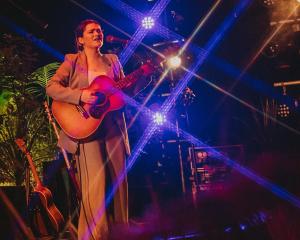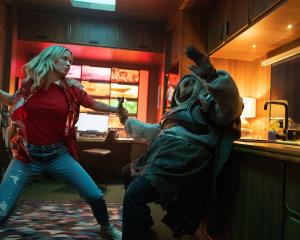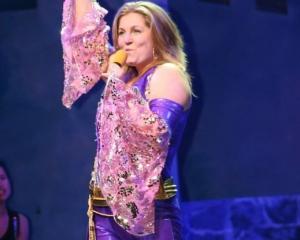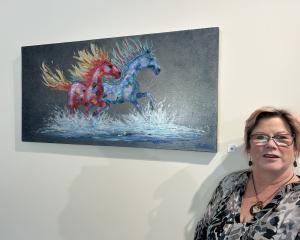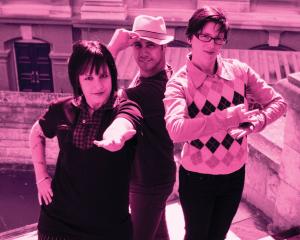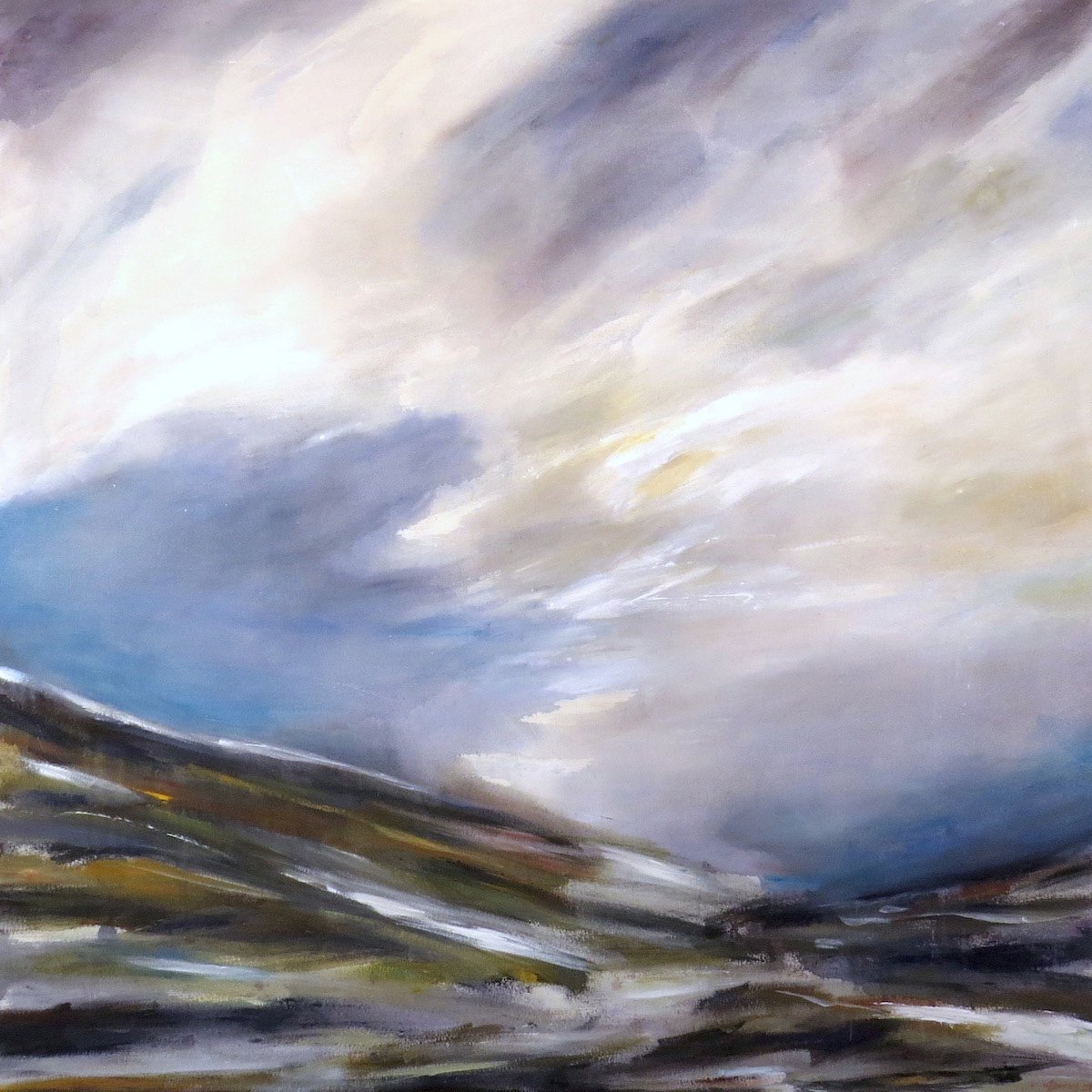
(Gallery De Novo)
The title of Angela Burns's latest exhibition, "Liquid Landscapes", gives a hint to a change of direction in the artist's style.
Burns is best known for striated abstracts inspired by the colours and forms of land and water, acrylic strata implying rocks, air and wet sand. While one of these pieces is present in this display, the meditative Shadows over the Rock and Pillar, most of the works on display are in a different style.
The artist has moved to watercolour in these paintings, and the brushwork has turned from calm abstraction to more dynamic and painterly forms. Landmarks are now more apparent, leading to strong, moody images like Evening Light, Waitati, in which a watery horizon divides the picture area into expansive foreground and a towering sky which seems to melt into misty distant hills. The works are bold and attractive, while perhaps lacking the serenity of Burns' acrylic works.
Perhaps the most interesting of the pieces on display is a halfway house image, painted in acrylic but using the same free brushwork of the watercolours. In this work, Sun Showers over Saddle Hill, a dramatic, sombre sky sits over the solid slopes of the hill. Somehow, the artist has managed to make a square of image seem panoramic, and has done so with panache.
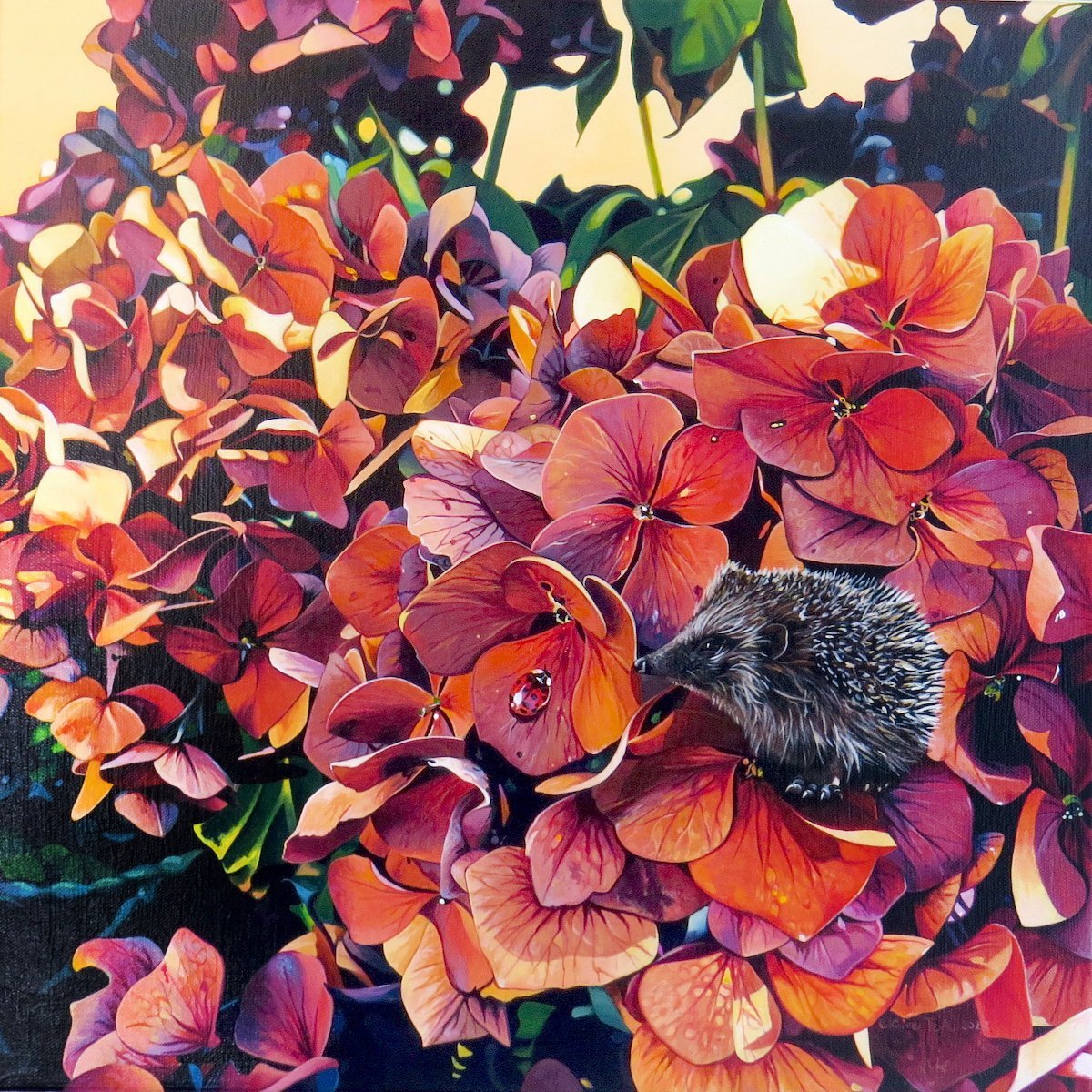
(The Artist's Room)
Claire Te Au has used the stories of Beatrix Potter as a launching point for her charming acrylic works.
The paintings are each in the form of a close-up of flower blooms, each gradually built up through multiple thin washes of paint. This process is particularly evident in the part of the images that are most likely to be ignored — the subtle, soft focus backgrounds which give the blooms their impressive sense of depth.
Against this floral backdrop, the artist introduces her portraits of Potter's magical wildlife — Jemima Puddleduck, Mrs Tiggy-winkle, Squirrel Nutkin and their friends. The animals are lovingly and precisely depicted, with cats, rabbits and hedgehogs appearing marvellously true to life. The creatures either stand proud in front of the blooms, as is the case with Jemima, or nestle deep within them to the point where the paintings become a game of hide and seek. The latter is certainly the case with The Tale of Jeremy Fisher, with the eponymous frog and bright hydrangea blooms.
A further game of hide and seek is contained within the images. Florence the Ladybird appears not just in a dedicated painting, but has also invaded all of the other works as an artist's signature. This adds an extra touch of whimsy to the bright and colourful works.
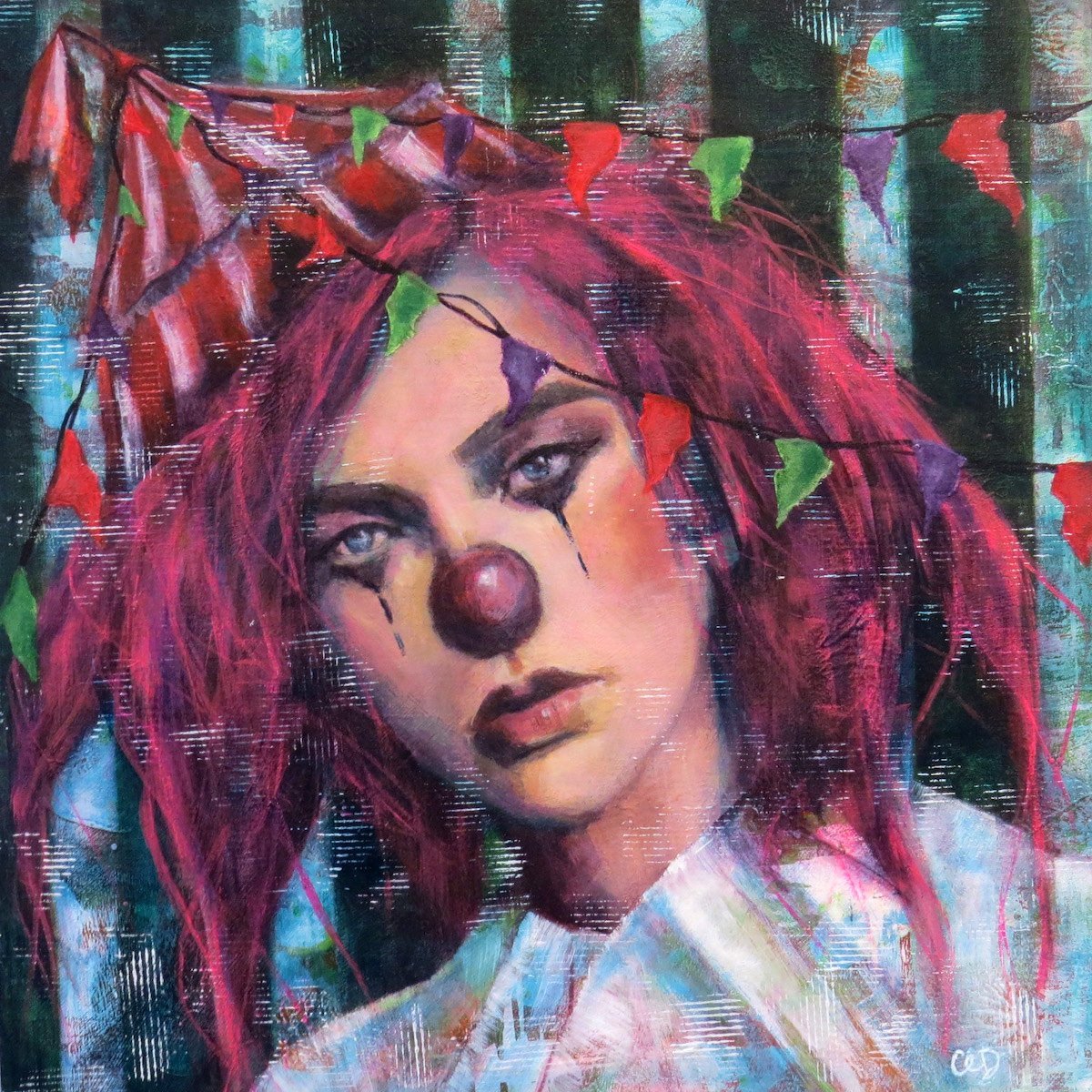
(Otago Art Society)
The Otago Art Society is hosting a "Circus of Colour" competition exhibition to celebrate this year's Fringe Festival, with its rooms’ works illustrating the circus and circus life.
Artists have interpreted the theme in many ways, from images of animals traditionally associated with circuses to allegories based on circus performances. Many of the works have used the theme of balance, as suggested by acrobats and other circus performers. Among these are Ruby Heyward's fine analogy of a woman's work with an acrobatics act and lovely miniature statues by Mari Gomes-Bradford and Brenda Nyhof.
Several artists approached the theme laterally or abandoned it entirely.
Impressive abstracts by Sylvia Peattie and Marika Jam are among these, along with Brian Stewart's strong sunset and Cassie Newman's Koura Kaleidoscope. It is the circus images which dominate, however, ranging from the eerie darkness of Hayden William's Sorrow Cycle to Raimo Kuparinen's Circus City installation. One room is imagined as a big top, with a central stage surrounded by close-up "audience" portraits ranging from Frida Kahlo to the King and Queen.
The competition's winners were all deservedly honoured: Anne Baldock's wry animal pay negotiations produces plenty of smiles, and the wistfulness and dynamism respectively of works by Scott Drummond and Pauline Bellamy well capture two opposing sides of circus life.
By James Dignan

